Ah, the cozy warmth of the sun, inviting you to bathe in its snug, glistening rays. Especially in summers, it’s hard to imagine a vacation without spending time on the beach—and, that’s okay! According to various studies and research, some sun exposure is good for health and brings about many positive changes in our body.
However, overexposure, particularly without any protection, can be highly hazardous. For over a decade, experts have been urging people to use sunscreen every time they go out into the sun. It’s the only way to ensure optimum protection from harmful ultraviolet (UV) radiation, which significantly increases the risk of skin cancers.
Despite the proven effectiveness of sunscreens, skin cancer is on the rise in the US. Over the past decade (2011 – 2021), the annual rate of newly-diagnosed melanoma cases increased by 44%.
To get a better idea of why this might be, we surveyed 1000 Americans to see how many people follow the doctors’ orders and wear sunscreen every day. The results are quite shocking!
A whopping 56% of participants reported rarely or never using sunscreen.
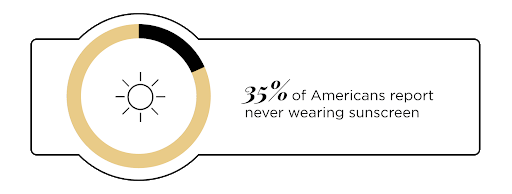
Only 19% of Americans Use Sunscreen Daily
It’s a known fact that ultraviolet (UV) radiation can cause malignant changes to your skin. According to studies, unprotected sun exposure is associated with 90% of non-melanoma skin cancers and 65% of melanoma skin cancers (one of the deadliest types of skin cancer).
Proper use of sunscreen blocks the harmful sun rays, UVA and UVB, from penetrating your skin. UVA rays are not absorbed by the ozone layer and are responsible for most sunburns. Ozone can only partially absorb UVB, the rays that can penetrate deep into the skin and cause malignant changes.
If you’re one of the 35% who never wears sunscreen, you should know that sunscreens can prevent more than 90% of UV rays from reaching your skin. That’s why you should always wear sunscreen even if it’s a cloudy day because more than 80% of the UV rays pass through clouds.
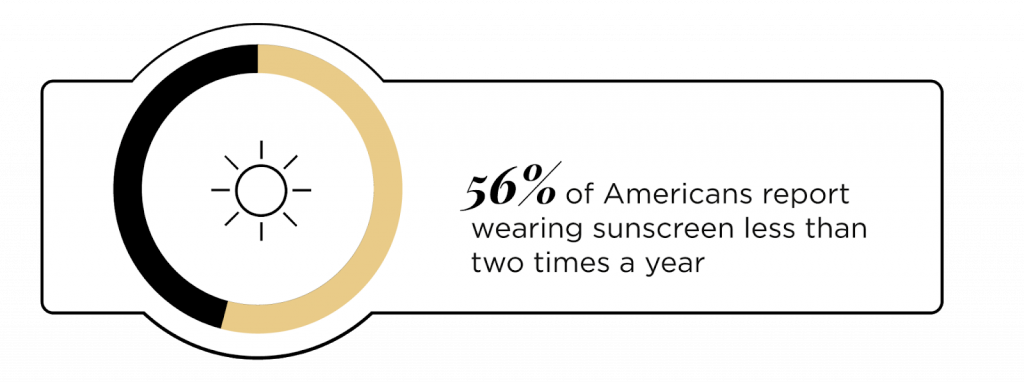
Studies reveal that 1 in every 5 Americans will develop skin cancer by the age of 70. Many Americans idolize a tanned body which they will go to extreme lengths to achieve—that means lying outside in the sun for extended hours and using tanning beds. This sudden exposure to prolonged sunlight can lead to harmful changes in the skin’s cellular structure.
Perhaps that’s why skin cancer has increased 300% over the past two decades. Skin cancer in Americans is five times higher than breast and prostate cancer, and ultraviolet radiation is responsible for 86% of melanoma cases.
According to Dawn Holman, a behavioral scientist in the cancer prevention and control center at the CDC, “The rise in skin-cancer rates boils down to UV exposure. If we can decrease that, we can decrease the number of skin cancers.”
Daily use of sunscreen with SPF 15 or higher can reduce the risk of developing skin cancer by about 40%. This means if you’re among the 56% of Americans who aren’t applying sunscreen regularly, you’re forfeiting a 40% protection from skin cancer.
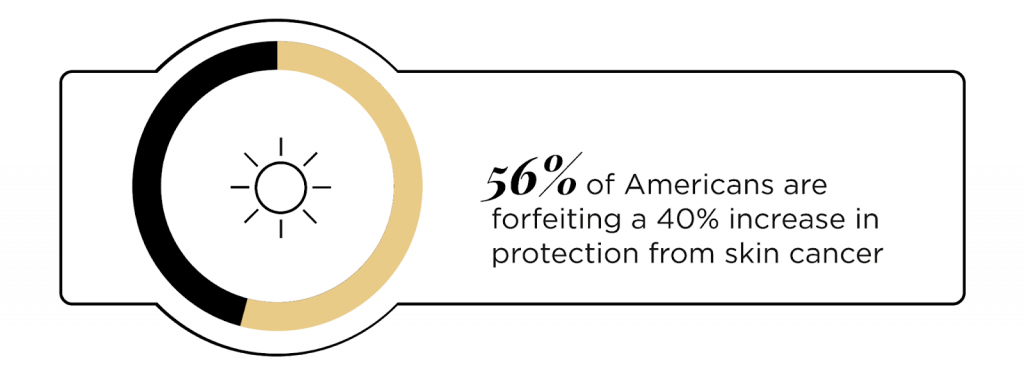
Over Half of Americans are Forfeiting a 40% Increase in Protection from Skin Cancer by Not Regularly Using Sunscreen
Sunscreens protect the skin by blocking the harmful UVA and UVB rays. All sunscreens contain a Sun Protection Factor (SPF) label, a measure of the protection you can get from that sunscreen. Experts recommend sunscreens with SPF 15 or higher for optimal protection.
Contrary to popular belief, SPF 30 doesn’t provide double protection compared to SPF 15. Instead, SPF 15 allows 1 in every 15 harmful rays to reach your skin, SPF 30 lets in 1 in every 30, and SPF 50 lets in 1 in 50 rays. Thus, SPF 15 provides 93% protection, SPF 30 provides 97%, and SPF 50 provides 98% protection.
However, to ensure your sunscreen can do its intended work, you need to apply it generously, ensuring every part of the skin is covered. A good rule of thumb is to use nine teaspoons of sunscreen on your whole body and one teaspoon for your face for effective coverage.
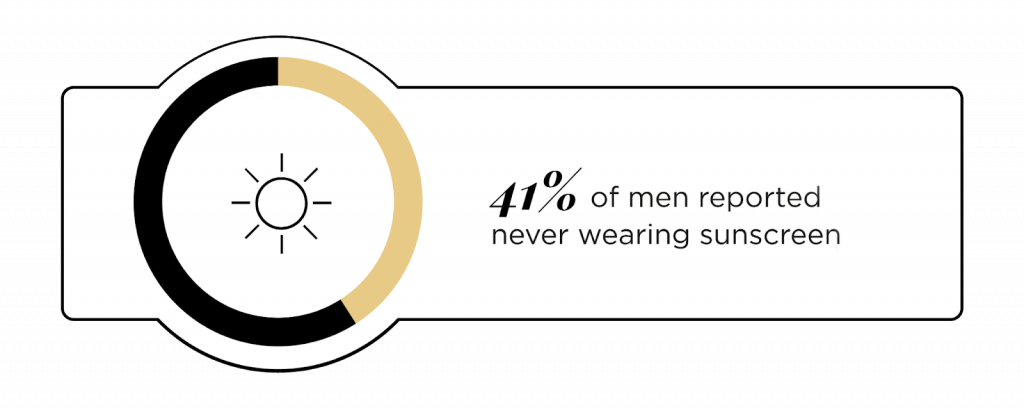
Sunscreen and Gender
Many people fail to understand the importance of sunscreens and treat them like just another skincare product. Since women are typically more proactive about skincare, we hypothesized that the number of women who use sunscreen would be higher than the men.
Our survey results confirm our assumption. Out of the people who responded to our survey, around 49% were male, and 51% were female. About 62% of male participants and 50% of female responders report rarely or never wearing sunscreen.
The number of females that wear sunscreen daily, however, was significantly higher than men at 26% and 11% respectively.
Interestingly, these stats mirror the results for new-diagnosed skin cancer cases, which are higher for men than women. Men account for 6% of new melanoma cases compared to 5% for women.
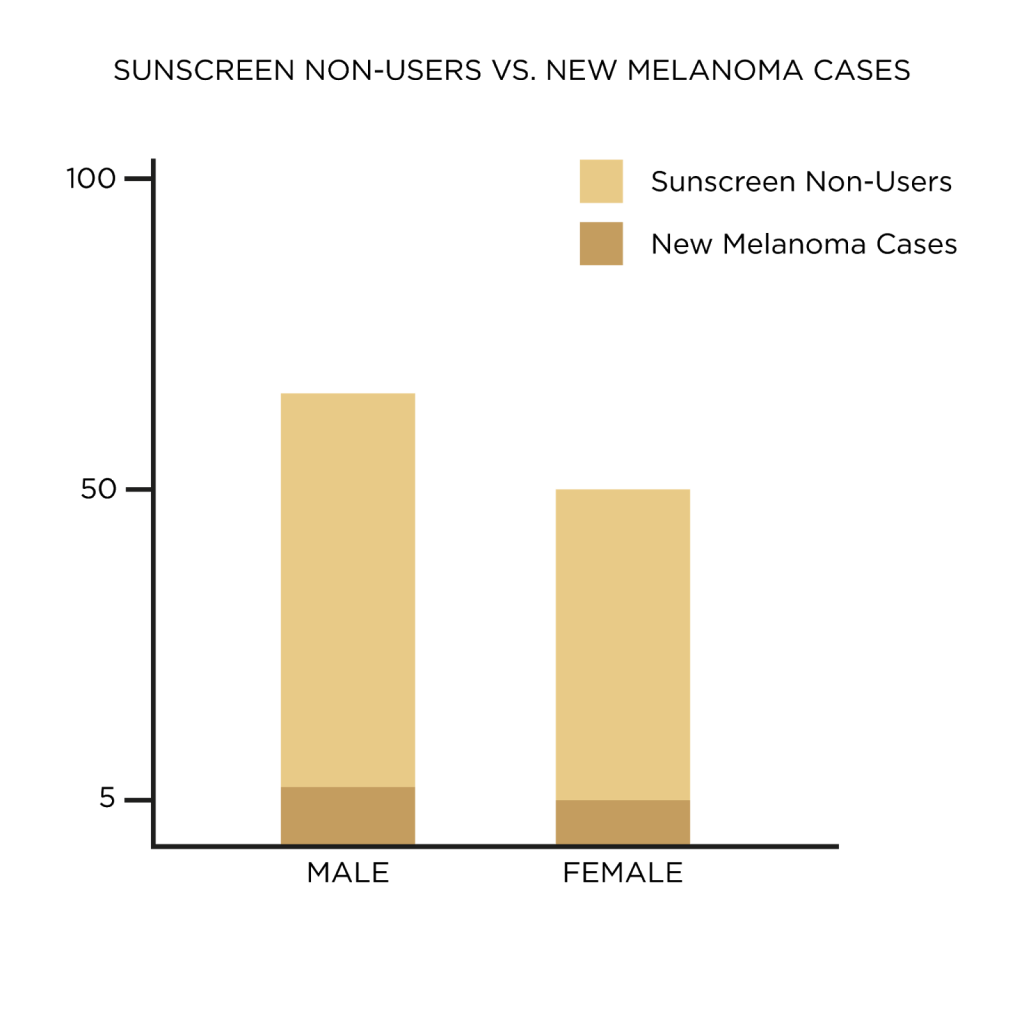
Sunscreen Stats by Region
Geographically, people from the West wear sunscreen the least at 47% reporting they never use sunscreen. The South came in second place at 41% reporting they never use sunscreen. Ironically, these are typically the states who would spend the most time in the sun.
About 38% of Northeasterners and 39% of Midwesterners report never using sunscreen.
Below, you can see those who reported never wearing sunscreen, wearing it less than once a year, or less than twice a year broken down by state with Nevada, Rhode Island and Kansas being the worst offenders when it comes to sunscreen use.
Of those surveyed, we saw Alaska and Hawaii with the most number of sunscreen users.
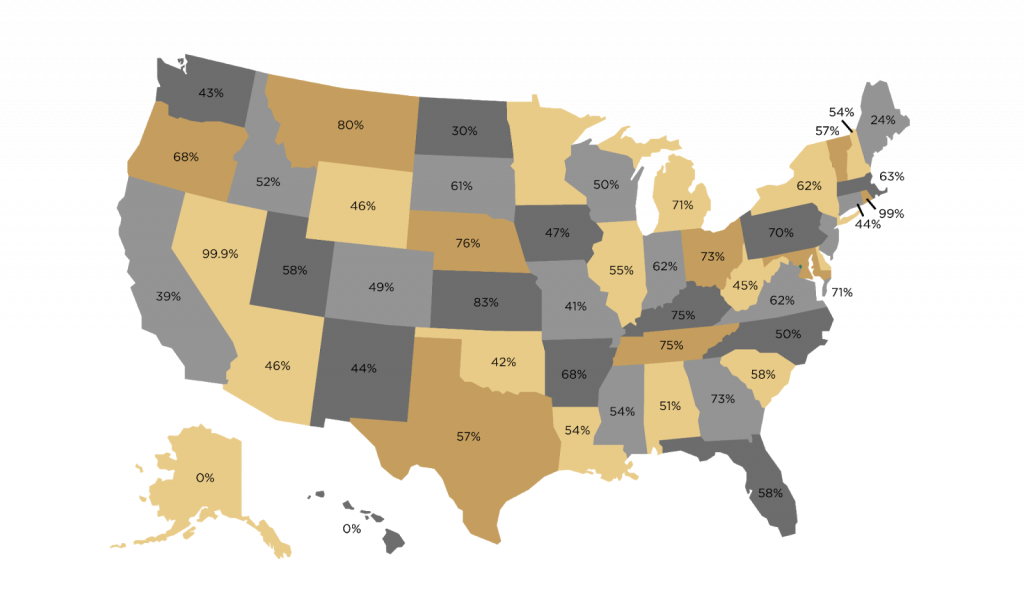
Reasons Why People May Avoid Sunscreen
Even though sunscreen’s effectiveness in preventing skin cancer is well-documented, only 19% of people wear it daily, which is too low. A study conducted on 429 individuals revealed a variety of reasons for people not using sunscreen. Here are a few interesting reasons and their frequency.
- 33.7% of people don’t like the way it feels.
- 15.3% of people don’t use it because they don’t have time.
- 16.4% of people find sunscreens too costly.
Educational campaigns aimed at increasing skin cancer awareness and sunscreens’ effectiveness can motivate people to prioritize sunscreen use despite their time constraints and personal preferences. Health practitioners will need to work with the 16% of patients who cannot afford sunscreens due to their high cost.
Sun rays are what you make of them, a friend or a foe, depending on how you face them. The sunlight is a source of nourishment for our body as it supports natural processes in the body like vitamin D production. But, if you don’t wear sunscreen, the same sun rays can create mutations in your skin cells, resulting in various types of skin cancers.

